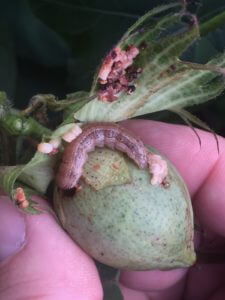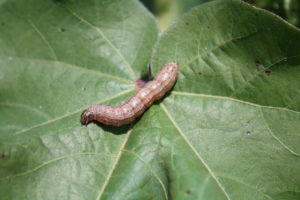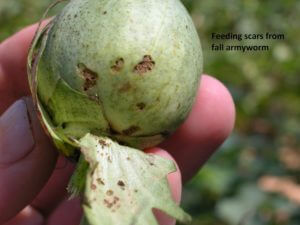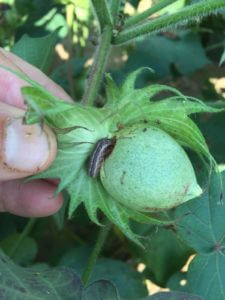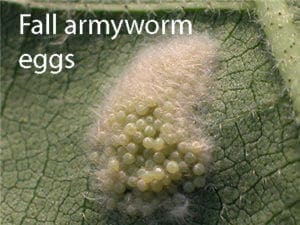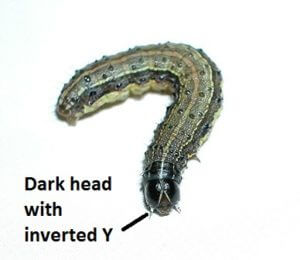Management options
| Insecticide (Trade Names)* for FALL ARMYWORM | Lb Active Ingredient per Acre | Amount Formulation per Acre | Performance Rating |
|---|---|---|---|
| acephate 90 (Orthene 90S) | 0.9 | 1.0 lb | 5 |
| chlorantraniliprole (Vantactor 5 SC) | 0.067 - 0.089 | 1.71 - 2.88 oz | 9 |
| chlorantraniliprole, bifenthrin (Elevest) | See label | 5.6 - 9.6 oz | 9 |
| chlorantraniliprole, λ-cyhalothrin (Besiege) | See label | 8 - 12.5 oz | 9 |
| emamectin benzoate (Denim 0.16) | 0.01 - 0.015 | 8 - 12 oz | 8 |
| indoxacarb (Steward 1.25) | 0.09 - 0.11 | 9.2 - 11.3 oz | 8 |
| methomyl (Lannate LV 2.4) | 0.45 | 24 oz | 7 |
| methoxyfenozide (Intrepid 2) | 0.06 - 0.16 | 4 - 10 oz | 8 |
| novaluron (Diamond 0.83) | 0.039 - 0.078 | 6 -12 oz | 8 |
| spinetoram (Radiant SC 1) | 0.033 - 0.0625 | 4.25 - 8 oz | 7 |
| spinetoram, methoxyfenozide (Intrepid Edge) | See label | 6 - 8 oz | 9 |
| spinosad (Blackhawk 36% WDG) | 0.056 - 0.072 | 2.4 - 3.2 oz | 7 |
*Most pyrethroid insecticides provide some suppression of fall armyworm infestations, and using the highest labeled rates or a tank mixture with products listed above will often improve control.
- Plant early maturing varieties.
- Bt cotton varieties provide good but variable levels of control. Insecticide applications may be needed in some cases, particularly in flowering cotton.
- Insecticide applications can be terminated when cotton has accumulated 400-450 DD60s past NAWF5 (NAWF5 = average of 5 nodes above a first position white flower).
